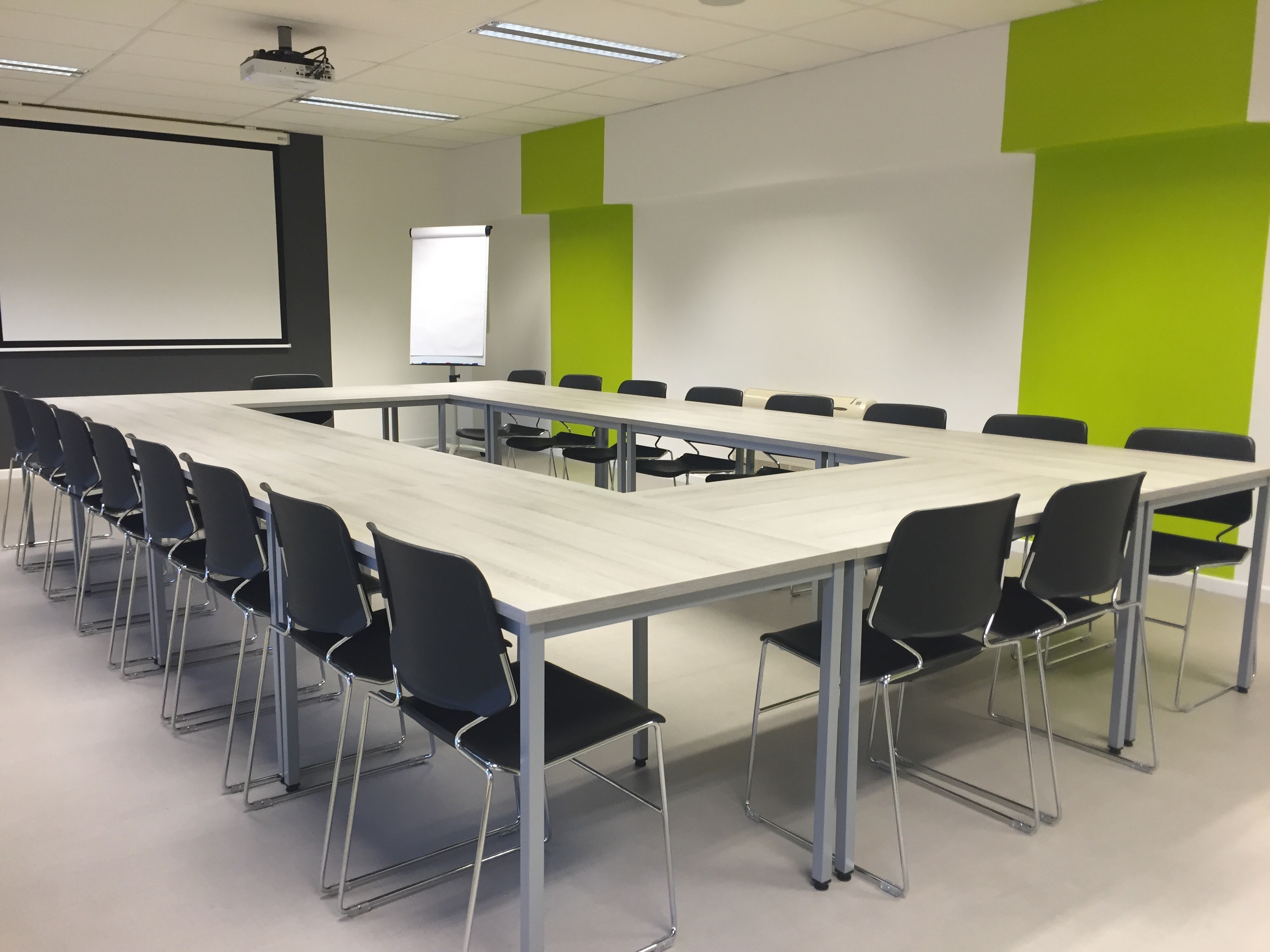
The Beginning of Prefabrication
The year was 40,000 BC: Early Homo sapiens could only make the most rudimentary of tools. They shared the earth with Neanderthals, and no human had yet to cross the Bering Land Bridge from Asia into North America. Yet it’s very likely that this early human invented a technology that is as relevant 42,000 years later as it was back then: prefabricated construction. Originally hunter-gatherers used animal skins, leaves, branches and wooden structures as makeshift homes for protection from the elements.

It’s highly likely that one of these early humans, an innovator, made an amazingly, well-built tent, and, as the tribe moved towards their next destination, the innovator took apart her tent and bundled the animal skins around the frame-poles. She called over her eldest son and helped him secure the pack onto his back. Then, when they arrived at a new location and the rest of the tribe scrambled around looking for adequate sticks to build shelter, our innovator simply unpacked her prefabricated tent, set it up, and maybe spent her extra leisure time painting on the walls of a nearby cave. Our innovator has proven that prefabrication is just more efficient.
From Pre-fabrication to Modular building – Defining the Criteria for our list.
Prefabrication, then, is one of the earliest human innovations. Later, civilizations expanded upon the prefab tradition with modular construction. There is a difference between prefabricated and modular construction.
Prefabrication is anytime that the components of a building are manufactured off-site. Modular construction is a specific type of prefabrication where components of the building are modules; that is, self-contained units that can attach, either vertically or horizontally, and form structures that are more complex.
The nuanced difference between these two construction styles makes a big difference in what is included in our “Historic Moments in Early Modular Building” list. For example, the Eiffel Tower can never be a part of the conversation about the history of modular construction: it was prefabricated, not modular. All of the components of the tower were manufactured off-site, and the pieces were assembled together later, like a jigsaw puzzle.
Aries is a successful modular construction company because we rely on modular, turn-key solutions, or modules ready for operation as soon as they have been assembled on site.
These modules are manufactured with the internal complexity already in place. The delivered classrooms, offices, houses, cafeterias, libraries, and locker-rooms already contain the toilets, shelves, lights, wiring, air-conditioning, showers, and other amenities.
Aries provides truly self-contained units that offer efficiency and flexibility. The modules with internal complexity—i.e. lights, pluming, toilets—are ready for use once they are delivered to the site. The modules can operate either by themselves or be linked together to make a complex.
While older buildings might be modular in form, they usually require extensive interior set-up prior to use.
With this in mind, we can finally begin our “Historical Moments in Modular Building.” Besides each building in our list we will rank it 1-10, 10 being closer to Aries’ style modular building: self-contained units with the interior complexity already fabricated before delivery.
Historic Moments in Early Modular Building
- 17th Century Ottoman Empire (Modular Ranking: 3)

The pure ambition of Ottoman Empire tents embodied the spirit of modular building in such a way that it earns the first spot on the list. Ottoman tents have been called multi-functional mobile palaces.[1]
These tents varied from “multi-storied, three-poled ovoid structures to individual parasols; and from rather austere bathroom and kitchen tents to ceremonial marquees and baldachins lavishly ornamented with layers of polychrome appliqué and gilded leather accents.”[2] The Ottomans customized each tent according to its use: ceremonies, cooking, executions, celebrations, military campaigns, or vacations. For example, kitchen tents always had ventilation holes in the roof.”[3]
These portable structures were not just useful; they were extravagant, beautiful, mesmerizing, and artistic. Externally, they were often made to resemble permanent palaces.[4] Internally, they had intricate and lovely artwork, sometimes containing detailed and accurate panoramas of entire cities embroidered into their sides. Like stained glass windows, the sun would filter through the tent causing the art to come to life.
Constantly on the move, Ottoman sultans used these tents as a home away from home, a tradition that Aries Residence Suites strives to maintain. These tents only have a modular ranking of 3, because they were transported through disassembling, not as a complete module, and the internal complexity—in this case lamps, cushions, chairs—would have to be transported and set up each and every time, separating these tents from ideal modular structures.
2. 1670 Colonial Modular Houses (Modular Ranking: 1)
Colonial modular homes of 1670 include any pre-fabricated colonial home, ranging the famous Australian modular homes, to the modular home sent to Colonial Massachusetts in 1670,[5] to the houses sent to the “forty-niners” who were prospecting gold in California.

With many different style choices and extremely easy to build, these houses made robust homes a reality for the European pioneers. The immigrants to Australia describe their frustration at learning to build with the local materials and their homes were repeatedly blown away by strong gusts of winds.[1] When they got an offer for modular homes from Great Britain, they couldn’t resist. Soon these sturdy houses, one of which still stands today, showed just how valuable it could be to pack up a home and unpack it at any site of your choosing.
[1] https://www.cornucopia.net/blog/found-objects-19th-century-ottoman-imperial-tents/
[2]https://www.academia.edu/7659821/Fabricating_a_New_Image_Imperial_Tents_in_the_Late_Ottoman_Period
[3]https://www.academia.edu/7659821/Fabricating_a_New_Image_Imperial_Tents_in_the_Late_Ottoman_Period
[4]https://www.academia.edu/7659821/Fabricating_a_New_Image_Imperial_Tents_in_the_Late_Ottoman_Period
[5] https://www.modular.org/HtmlPage.aspx?name=faq
[6] Herbert, G. (1972). The Portable Colonial Cottage. Journal of the Society of Architectural Historians, 31(4), 261-275. doi:10.2307/988810
These houses pioneered the essential components of subsequent modular building: customization, ease of building, and designed for portability.[1] However, these houses only rank with a paltry “1” for modular construction. Although they are almost always included on modular construction lists, these houses could hardly be joined with other modules, and they usually weren’t delivered as true modules, but as “build-it-yourself” type sets with all the instructions and materials included.
3. 1851 “Portable” Crystal Palace (Modular Ranking: 9)

During its time, it was a wonder of wonders, a must-see for everyone traveling to London. It hosted the Great Exhibition of 1851 and its tremendous size and architectural advancements created awe and wonder as a perfect embodiment of renaissance and industrial revolution ideals:
“Innovative in structure, completely new in its function, unusual in form and significant in the associations it embodied, it takes its place with a handful of other preeminent buildings such as the Pantheon, Hagia Sophia and Abbot Suger’s St. Denis.”[1]
The Russian writer Dostoevsky, aghast at the size, ambition, and capitalistic relevance of the Crystal Palace would become obsessed with the building and would write about its symbolic existence as being something that “you feel that something final has been accomplished, accomplished and brought to a close.”[2]
It was 1,848 feet long by 408 feet wide. It was relocated and enlarged, eventually measuring more than a quarter mile long.[3] Within, it contained all types of wonders and technologies displayed during the Great Exhibition. More importantly, and the reason that it gets a ranking of 9 on our list, is that the
Crystal Palace astounded the world with modular buildings powers: its construction was fast, it could be relocated, and it could be expanded almost effortlessly, without sacrificing design or size.
4. 1855 Endless, Prefabricated Renkioi Hospital (Modular Ranking:7)
Florence Nightingale, a nurse who, from the destruction of war, brought about a revolution in medicine…and also, an advance in modular construction.
[1] Kihlstedt, F. (1984). The Crystal Palace. Scientific American,251(4), 132-143. Retrieved from http://www.jstor.org/stable/24969462
[2] [2] http://sarahjyoung.com/site/2010/04/22/the-crystal-palace-in-russian-literature-2/
[3] https://www.youtube.com/watch?v=iNUrMS4N_cM
[1]Herbert, G. (1972). The Portable Colonial Cottage. Journal of the Society of Architectural Historians, 31(4), 261-275. doi:10.2307/988810

Nightingale was a nurse working for the British in Turkey during the Crimean war. She developed advanced theories of ventilation for disease prevention in hospitals. In order to meet the growing demand for a hospital, the British commissioned and sent a modular hospital that met the ventilation needs stipulated by Nightingale.
As with other buildings on the list, Renkioi hospital traveled not as a modular unit, but as a prefabricated kit full of the parts. However, Renkioi soars high to a modular ranking of 7 because it provided a modular solution to a common problem in the healthcare industry: the Renkioi hospital had an initial patient capacity, but the British weren’t sure just how many patients the hospital might have to hold. The solution was to design an endless hospital, the length equipped to be increased indefinitely. The wards could be linked to grow the hospital with demand.
With this innovation, modular construction increased its competitive advantage over other forms of construction.
5. 1908 Sears Kit Homes (Modular Ranking: 3)
Like the Colonial Modular Houses, Sears Kit Homes were delivered in “build-it-yourself” type sets. Ordered from a catalog, the home would appear at the delivery site where the new owner could assemble the house. However, Sears Kit Homes only garner a ranking of 3 because they couldn’t be united with other homes to make more complex structures, and their delivery in kits places them close to prefabrication rather than true modular building. These faults cause these gorgeous houses to fall well beneath the vanguard for modular building.

The Vanguard
To close out the blog, let’s take a quick look at the vanguard of modular building. In the 20th Century, modular science advanced in leaps and bounds as companies perfected the fundamentals of modern mass production: interchangeable parts and standardization. Modules were used in buildings during WWII, college dorms, fast food restaurants, and suburban housing. However, perhaps the most impressive leap took place with the advent of modular skyscrapers. All the predecessors on the list have led to this moment:
21st Century Skyscrapers (Modular Ranking: 10)

In 1852, an architect by the name of Burton proposed reformatting the Crystal Palace into a sky-scraper. He had recognized the potential of modular building for the rapid extension of buildings into the skyline.[1]
Burton’s proposal has now become a reality. Some modular skyscrapers include:
- In 1969, the Hilton Palacio del Rio had modular bedrooms installed onto the structure. The rooms included all the required wiring, plumbing, and other amenities.
- The 2017 Croydon Skyscraper in England was entirely built by modules that were delivered with wiring and plumbing
- The Mini Sky City (2015) in Central China boast of having built 3 stories per day on their 57-story skyscraper.
- The Clement Canopy building (2019) in Singapore has taken the record for highest modular skyscraper in the world at 459 feet, a height record that has changed hands 3 times in as many years, demonstrating the quick advance of the technology:
“Each module is around 85 per cent finished off-site, before then being assembled onsite,” Bouygues Bâtiment International’s head of modular construction Aurélie Cleraux told Dezeen.” This includes, for example, the painting, windows frame and glazing, doors, wardrobes and MEP (mechanical, electrical and plumbing) including water and sanitary pipes, electrical conduits and ducting, which are all totally finished before the modules arrives on site.”
These towers, infinitely stackable, modular, and with prefabricated internal-complexity, garner a perfect 10 rating on our list.
Aries Building (Modular Ranking: 10)
Aries continues to be a leader for modular building and design:
When you need to move quickly, Aries modular construction takes approximately half the time as traditional construction, saving money by reducing the on-site timeline. Besides turnkey project completion, Aries also offers a wide range of purchase and lease options. Our in-house financing is secured well before your building is delivered: one less thing you need to worry about. Aries is the commercial design, manufacture, transportation, construction and financing partner you need to make every project a success. Contact us and let`s make history!
[1] Kihlstedt, F. (1984). The Crystal Palace. Scientific American,251(4), 132-143. Retrieved from http://www.jstor.org/stable/24969462


















